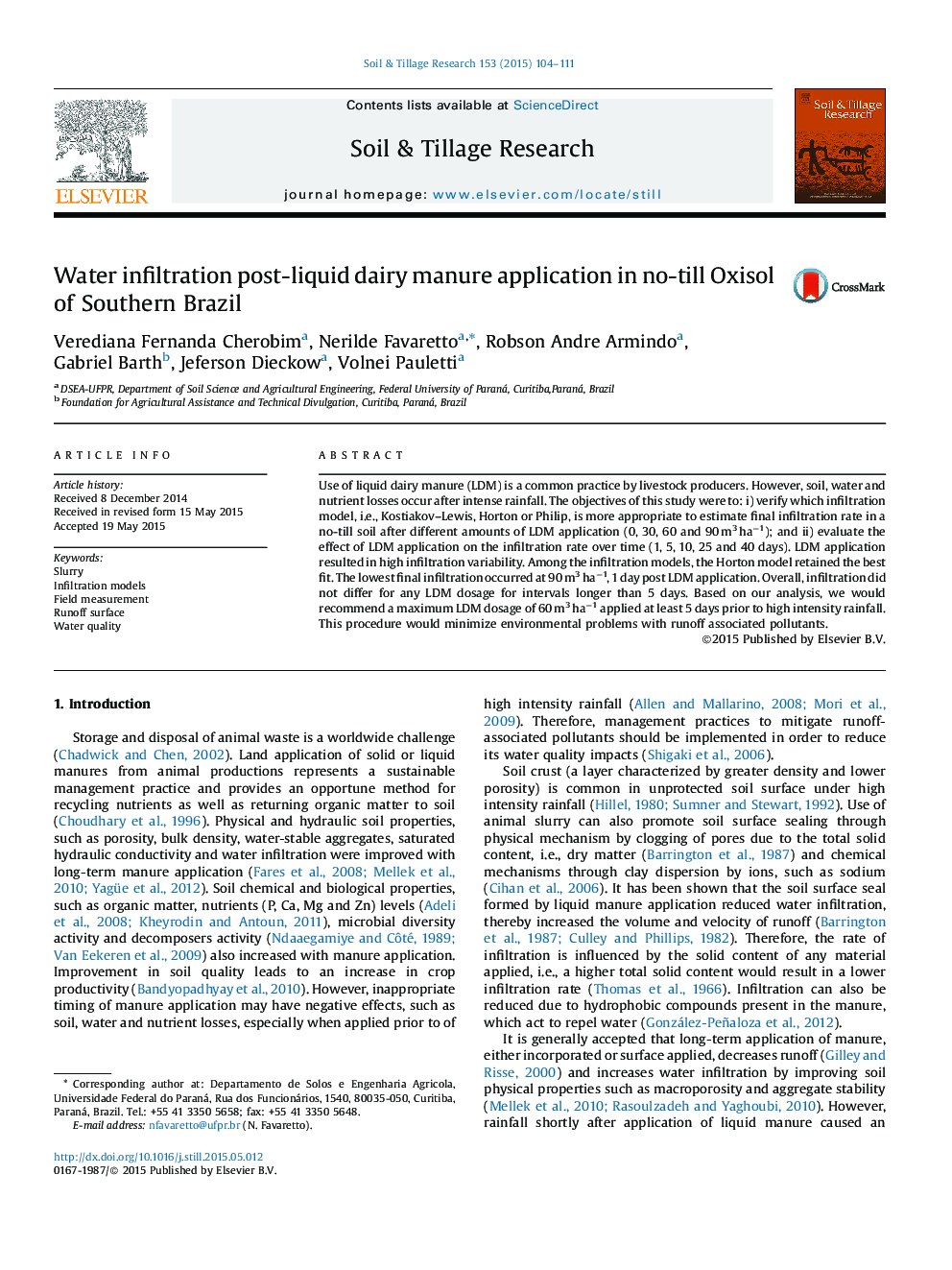| کد مقاله | کد نشریه | سال انتشار | مقاله انگلیسی | نسخه تمام متن |
|---|---|---|---|---|
| 305525 | 513032 | 2015 | 8 صفحه PDF | دانلود رایگان |

• Horton model presented the best adjustment to estimate water infiltration in a clay soil under no-till and surface manure application.
• The dosage of liquid dairy manure (LDM) and the lag time after the manure application affected water infiltration rate.
• The best final infiltration rate was obtained from the control treatment, i.e., without LDM.
• In practical terms, we would recommend a maximum LDM dosage of 60 m3 ha−1 applied at least 5 days prior to heavy rainfall.
Use of liquid dairy manure (LDM) is a common practice by livestock producers. However, soil, water and nutrient losses occur after intense rainfall. The objectives of this study were to: i) verify which infiltration model, i.e., Kostiakov–Lewis, Horton or Philip, is more appropriate to estimate final infiltration rate in a no-till soil after different amounts of LDM application (0, 30, 60 and 90 m3 ha−1); and ii) evaluate the effect of LDM application on the infiltration rate over time (1, 5, 10, 25 and 40 days). LDM application resulted in high infiltration variability. Among the infiltration models, the Horton model retained the best fit. The lowest final infiltration occurred at 90 m3 ha−1, 1 day post LDM application. Overall, infiltration did not differ for any LDM dosage for intervals longer than 5 days. Based on our analysis, we would recommend a maximum LDM dosage of 60 m3 ha−1 applied at least 5 days prior to high intensity rainfall. This procedure would minimize environmental problems with runoff associated pollutants.
Journal: Soil and Tillage Research - Volume 153, November 2015, Pages 104–111